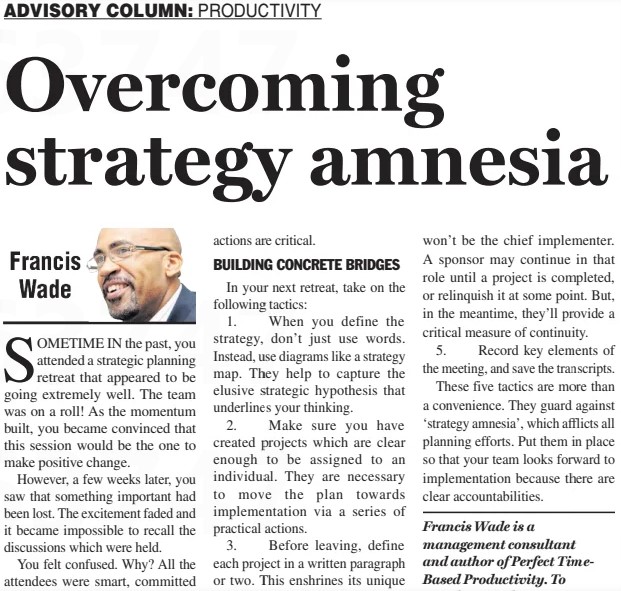Have you ever left a strategic planning retreat feeling invigorated, only to find that the excitement fizzles out? Despite the initial enthusiasm and belief in the positive change that was about to ensue, weeks later, the essence of those profound discussions becomes a distant memory.
The baffling reality is this: a gathering of bright, dedicated individuals, all ardently striving to make a meaningful difference, encountered an unexpected descent post-retreat. The perplexity of this decline seemed insurmountable, leaving one pondering what went awry.
Thankfully, a recent book “Lead from the Future” by Johnson and Suskewicz sheds new light. These insights delineate a striking dichotomy in mindsets: “Past Forward” versus “Future Back.” Let’s delve into these divergent mental frameworks to illuminate the conundrum at hand.
The Dichotomy of Mindsets
The prevalent “Past Forward” mindset thrives on incremental advancements, rooted in dissecting past triumphs and failures. It’s the default mode for most managers navigating day-to-day challenges, leveraging their proven track records that propelled them up the ranks.
However, the milieu of a strategic planning retreat demands a paradigm shift, beckoning participants to embrace an unfamiliar “Future Back” approach. Here lies the crux: mastering this skill within a group setting remains uncharted territory for the average manager.
Sure, crafting lofty vision statements might seem within their purview. Yet, sculpting a comprehensive future and then backcasting it to the present demands a distinct skill set. It’s akin to acquainting oneself with an intricate dance just moments before the performance begins.
Initial struggles are commonplace with newfound skills. Yet, with perseverance, momentum gradually builds. Ideas cascade, intertwine, and gather pace, an exhilarating whirlwind of innovation and collaboration ensues.
The Fragility of Future Back Thinking
However, amidst this euphoria lurks a paradox unique to strategic planning assemblies.
Picture hurtling down a steep incline in a hastily assembled homemade go-kart…at breakneck speeds. The thrill is palpable, but the precariousness looms – at any moment, the framework could splinter apart.
Similarly, the pinnacle of a strategic planning retreat rests atop the fragile pedestal of a Future Back mindset. However, the buoyant euphoria often leads participants to overestimate its durability, a temporary high masking its ephemeral nature.
Regrettably, mere hours post-retreat, this Future Mindset evaporates. The commitments, decisions, and promises made during the meeting dissolve as the rigors of daily operations resurface, ushering back the Present Forward mentality.
Hence, navigating this transition demands astute tactics tailored for strategic planning retreats, steering teams from this transient mindset toward tangible implementation.
Constructing Resilient Frameworks
Envisage your next retreat as an arena for implementing these tactics:
– Visual Strategy Mapping: Transcend mere verbal articulation; employ diagrams to encapsulate the elusive strategic hypothesis underlying your deliberations.
– Actionable Projects: Define projects in tangible terms, delineating actionable steps for seamless execution.
– Project Descriptions: Elaborate on each project in written paragraphs, engraving its significance and rationale into the strategy.
– Sponsorship Assignments: Appoint sponsors for each project, fostering ownership and ensuring continuity beyond the retreat.
– Comprehensive Documentation: Record vital discussions and retain transcripts for future reference and sustenance of momentum.
These strategic pillars aren’t just conveniences; they stand guard against the pervasive “Strategy Amnesia” plaguing planning efforts. Deploy them to infuse accountability and anticipation into the implementation phase, steering clear of post-retreat disillusionment.

